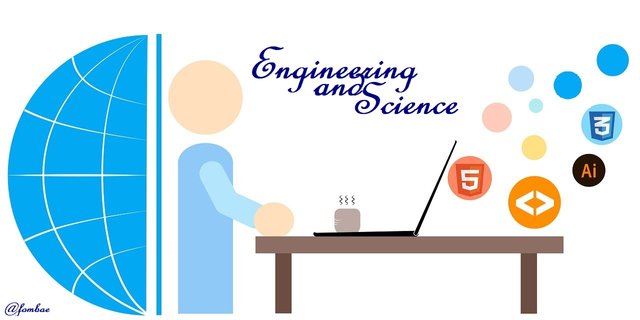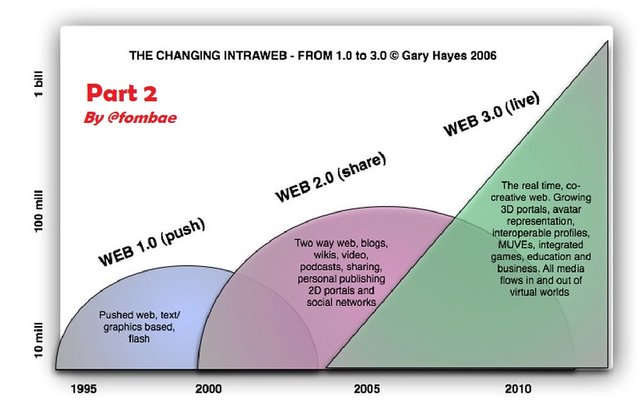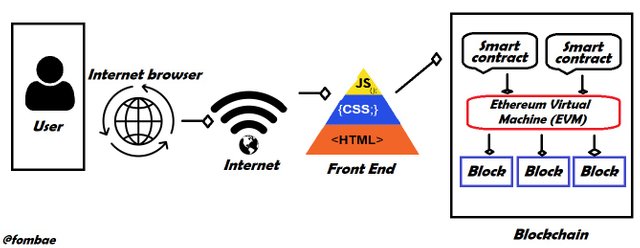Engineering and Science (Web 3.0 Continue..)
 Image source Pixabay.com
Image source Pixabay.com
Intro
In the previous post, I introduce Web 3.0. Web 3.0 is the putting together of machine learning, artificially intelligent, and blockchain to build a decentralized platform, that connects data in a faster and personalized manner. I did mention that before the invention of Web 3.0, the internet users were making use of Web 1.0, and later moved to Web 2.0 due to innovation and advancements in technology. But due to the setbacks and mismanagement of user data by giant companies in the era of web 2.0, blockchain specialists saw Web 3.0 as the ultimate future for the internet. It brings in the safer version of the internet where the user will have control over their data and will equally be paid for their time spent on the web. In the last post, I highlight the basics you have to know about Web 1.0 and Web 2.0. Let's jump into the man of the future (Web 3.0)
 Image source Flickr.com
Image source Flickr.com
Web 3.0
It is a read-write-interact web (powered by artificial intelligence) and is taking over from the second generation(web 2.0). Web 3.0 got popular in 2006 when Berners Lee's semantic web concept was used with no central controlling authority needed. Here people can read, write and interact with content, including 3D graphics, on websites and apps with full ownership of their data. As mobile, social and cloud technologies were the core driving force for web 2.0, with web3.0 three more core driving forces in technological innovation are added to the computing edge.
Features of web 3.0
Edge computing
Here we are putting all the core layers of web 2.0, as data was centered on one giant computer. Web 3.0 moves the data to the edge, which is bringing the data straight into the hands of its users. The data centers here are more advanced to distribute resources among laptops, phones, appliances, sensors, and cars in a lesser time.
Decentralized Data Network
Here users can sell or trade their data without the interference of intermediaries of any controlled authorities, the user has ownership over the data. Decentralized data network, the user's privacy is protected from any intermediaries. For example, Giant tech companies like Facebook and Google track and monitor user activities, which they use to target their adverts. Hence with web 3.0, data is decentralized keeping the ownership with the users and secure. Here user data is not tracked as the user's internet identity is not at any risk with web 3.0.
Artificial Intelligence & Machine Learning
This advancement in technology has made valuable predictions and actions on the internet and is sometimes life-saving. Although we find this feature in web 2.0, it gives the allowance for corrupt behaviors such as rigged ratting and humane errors. For example, a company can pay an individual to make high reviews for their products and services. By doing so, giving out wrong data to internet users and mislead users. With AI integrated into web 3.0 to distinguish between genuine and fraudulent data.
Blockchain
Here is the layer of technology that is the foundation of web 3.0 used to hold the data structure at the backend of the semantic web. Blockchain is the underlying layer for smart contracts to define their logic for web 3.0 web applications. So for any blockchain application, the code needs to be shared(deployed) on the decentralized state machine.
How Does Web 3.0 Work
Web 3.0 is about easy access to data(during search) with a personalized user experience over the internet. Here the user communicates with the database without a central controller.
Compared with web 2.0, where the data is hosted on a centralized server. The user has to go through checks and communications to have access. The users interact with the frontend to send a signal to the backend, and which will now communicate with the database. The user then receives the data or response needed through the internet browser.
It is not the case with the third generation (web 3.0)m since there are no centralized web servers to hold the backend logic or database to store the application state. Web 3.0 applications are built on blockchain, which is a decentralized state machine maintained by anonymous nodes on the web. The logic of these applications built on blockchain is known as smart contracts, and which are then deployed onto the blockchain by its developers.

The deploying of the application code to the decentralized shared state machine is the backend as that is where the application logic is been handled, while the front end is pretty much the same as the web 2.0
Web 3.0 Architecture
Looking at the structure of Web 3.0, we can break it into four major parts: Blockchain, smart contract virtual machine, and front end.
Blockchain: Here everyone has access, following the peer-to-peer network of nodes permitting anyone to write(or deploy) on the decentralized state machines. This is not owned by any particular body, but by everyone on the network. An example is the Ethereum Blockchain which users can write and can not update the existing data.
Smart-contract: These are the logic (applications) that run on the blockchain and are written by developers with high-level languages. Ethereum Blockchain is an example of a blockchain that runs suck programs. The developers use languages like Solidity or Vyper in building smart contracts.
Virtual Machine: These are where the logic defined by the smart contract is executed. Ethereum Virtual Machine (EVM) handles the process of stage changes in the back end.
Front End: The front end is the area where the users connect and communicate with the application. It is where the UI logic is defined while connecting the user to the smart contract.
I will end here, hoping I have been able to simplify our understanding of Web 3.0 technology. As we have seen the difference is clear when comparing Web 1.0, and Web 2.0, Web 3.0 is putting AI, machine learning, and blockchain. While web 2.0 is about users using the browser to communicate to a server which then communicates to a central database, it is not the case with Web 3.0. I will beg you to stay as I will be working on my next post on the advantages and disadvantages of Web 3.0, which is the future of the internet.
Cheers
Thanks for dropping by
@fombae
Hi @fombae
Your post has been curated by Steem Cameroon curation account
Thank you for supporting Steem Cameroon.
Keep steeming!!
Reviewed by: @majerius